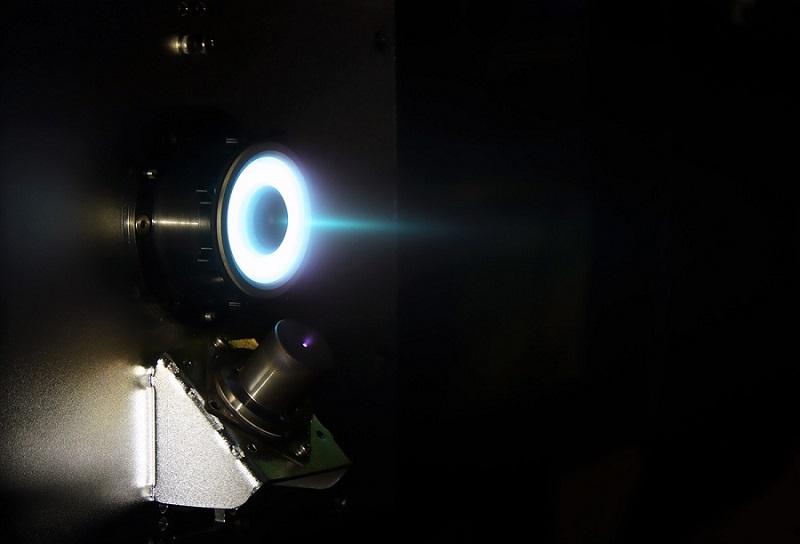Information Center
- Main page
- Information Center
- Government News
Government News
- Source
- korea.net
- Date
- 2025.02.04

A low-power Hall-effect thruster of 150 W used to position ultra-small and small satellites is seen being operated. A device to better control these has been developed by a research team led by Korea Advanced Institute of Science and Technology (KAIST) nuclear and quantum engineering professor Choe Wonho, and Cosmobee, an electric propulsion company. (KAIST)
By Margareth Theresia
A technology to predict and control an electrically powered thruster's functions using artificial technology (AI) has been developed by Korean researchers, and will be tested on a satellite this year.
A research team led by Korea Advanced Institute of Science and Technology (KAIST) nuclear and quantum engineering professor Choe Wonho announced on Feb. 3 that it developed a technology to predict and control with high accuracy the function of a Hall-effect thruster, an engine used in positioning and steering satellites and space probes.
The AI-based cube satellite (cubesat) Hall-effect thruster will be installed on the cubesat K-Hero during the fourth launch of Nuri, a domestic space launch vehicle, in November this year.
Hall-effect thrusters play a crucial role in space technology, as they are highly efficient plasma propulsion devices that are used on difficult space missions such as the positioning of the Starlink satellite constellation from Space X, and Psyche, an asteroid probe.
The need for hall-effect thrusters is increasing, as these devices are necessary for various space missions amid the expansion of the space industry. To swiftly develop hall-effect thrusters customized for each mission, the technology to accurately predict a thrusters' functions at the design stage is pivotal.
The KAIST research team proposed AI methods to curtail the time for each stage; from design to production and testing via accurate function predictions, and thus save costs.
The team's AI neural network model boasted a high accuracy with an average error rate of less than 5% on 700W and 1kW thrusters. The high-powered Hall-effect thrusters developed by U.S. Air Force's research lab have an average testing error rate of less than 9%. The latest AI technology has proven to be applicable extensively in Hall-effect thrusters at various electric power scales.
margareth@korea.kr